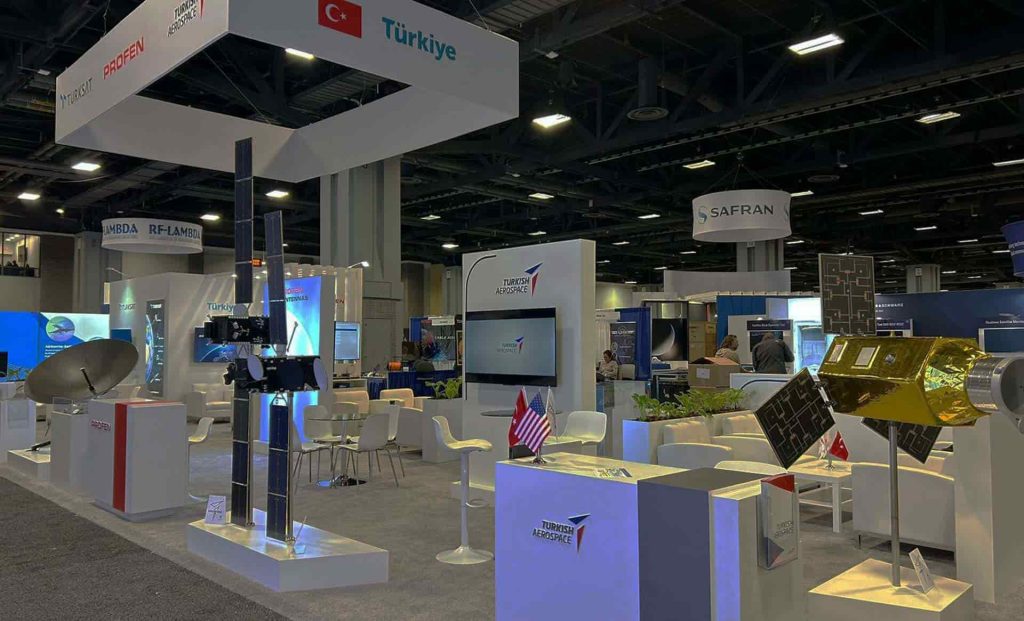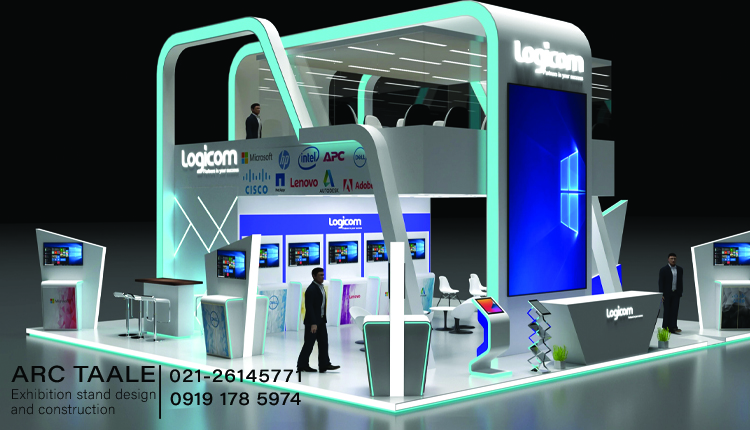Building an exhibition stand is akin to crafting a dynamic stage where businesses showcase their products, services, and brand identity. However, behind the scenes, there lurk numerous challenges that demand meticulous planning, creative problem-solving, and flawless execution. Let’s delve into the exhibition Stand Design Mistakes often encountered in this endeavor. Building an exhibition stand has challenges and problems that you may encounter. By following some tips, you can avoid these mistakes.
Common Challenges of Building an Exhibition Stand
Building an exhibition stand is akin to navigating a labyrinth fraught with exhibition Stand Design Mistakes and challenges at every turn. However, with meticulous planning, creative ingenuity, and unwavering determination, these obstacles can be overcome, transforming the stand into a beacon of success amidst the bustling trade show landscape.
Design Conundrum
Crafting a stand design that not only captivates attention but also aligns with the brand message can be a daunting task. Balancing aesthetics with functionality while adhering to space limitations requires careful consideration.
Budget Constraints
The financial aspect looms large over every decision. Balancing between achieving the desired impact and staying within budgetary confines demands shrewd negotiation skills and resourcefulness.
Logistical Juggling Act
Coordinating logistics, including transportation, installation, and dismantling, presents a logistical puzzle. Timely delivery of materials and ensuring seamless setup amidst venue restrictions test the mettle of organizers.
Technical Glitches
In the age of multimedia integration, technical malfunctions can throw a wrench into meticulously planned presentations. From audio-visual hiccups to lighting issues, troubleshooting on the spot requires adept problem-solving skills.
Compliance Quagmire
Navigating through the maze of regulations imposed by event organizers and venue authorities can be labyrinthine. From safety standards to union regulations, ensuring compliance is a meticulous yet imperative task.
Traffic Management
Attracting foot traffic to the stand amidst a sea of competitors is a perpetual challenge. Strategic positioning, engaging signage, and interactive elements are crucial in enticing and retaining visitor interest.
On-site Adaptability
Despite thorough preparation, unforeseen circumstances often arise on-site, necessitating swift adaptability. From sudden layout changes to unexpected power outages, the ability to improvise on the fly separates the adept from the overwhelmed.
Team Coordination
Building an exhibition stand is a collaborative endeavor involving multiple stakeholders. Effective communication and seamless coordination among designers, contractors, and onsite staff are paramount for smooth execution.
Post-Event Evaluation
The culmination of the event doesn’t mark the end of challenges but rather initiates the phase of post-event evaluation. Analyzing metrics, gathering feedback, and identifying areas for improvement are crucial for refining future strategies.
Common exhibition Stand Design Mistakes to avoid
Designing an exhibition stand is an art form that demands a delicate balance of creativity, functionality, and strategic thinking. However, amidst the fervor of creation, it’s easy to stumble upon common pitfalls that can detract from the stand’s effectiveness. Let’s explore these potential missteps and learn how to steer clear of them to ensure a standout presence at any trade show.
Ignoring Brand Identity
One of the gravest errors is disregarding the brand’s identity in stand design. A stand should serve as a visual manifestation of the brand’s essence, incorporating its colors, fonts, and imagery cohesively to reinforce brand recognition and messaging.
Overcomplicating Design
Complexity can detract from effectiveness. Overloading the stand with excessive graphics, cluttered layouts, or convoluted messaging can overwhelm visitors and dilute the intended message. Embracing simplicity allows key elements to shine through and resonate with the audience.
Lack of Clear Objectives
Designing without clear objectives is akin to sailing without a compass. Without a defined purpose, the stand risks being directionless and failing to deliver measurable results. Establishing clear goals, whether it’s lead generation, brand awareness, or product showcasing, is essential for designing with intent.
Poor Space Utilization
Squandering space is a cardinal sin in stand design. Failing to optimize the available area can result in cramped pathways, inaccessible displays, or missed opportunities for engagement. Strategic layout planning ensures efficient use of space, facilitating smooth visitor flow and enhancing accessibility.
Neglecting Audience Engagement
A stand devoid of interactive elements or visitor engagement zones risks being a mere visual spectacle. Neglecting to incorporate interactive displays, product demonstrations, or immersive experiences can diminish visitor interest and hinder meaningful interactions. Prioritizing audience engagement fosters memorable experiences and encourages deeper connections with the brand.
Ignoring Logistics
Designing in isolation from logistical considerations is a recipe for disaster. Ignoring factors such as venue restrictions, transportation constraints, and setup logistics can lead to last-minute crises and compromises in stand execution. Integrating logistical considerations into the design process ensures a seamless and stress-free execution on-site.
Failing to Plan for Technology
In the digital age, technology plays a pivotal role in stand design. Failing to plan for technological integration, whether it’s interactive displays, digital signage, or virtual reality experiences, can result in technical glitches or missed opportunities to captivate and engage visitors. Thoughtful incorporation of technology enhances the stand’s allure and fosters a futuristic brand image.
Key Solutions to Sidestep Mistakes in Booth Design
Crafting an impeccable booth design is akin to orchestrating a symphony of creativity, strategy, and meticulous planning. Yet, even the most seasoned exhibitors can stumble upon pitfalls that compromise the effectiveness of their booths. To navigate these challenges with finesse, it’s essential to employ strategic solutions that preemptively address potential exhibition Stand Design Mistakes. Let’s explore some key strategies to ensure booth design success.
Embrace Strategic Planning
Before diving into design details, embark on a journey of strategic planning. Define clear objectives, understand the target audience, and conduct thorough research on competitors and industry trends. Armed with this insight, devise a comprehensive plan that serves as a roadmap for the design process, guiding decisions and ensuring alignment with overarching goals.
Prioritize Brand Consistency
Consistency is key in conveying a cohesive brand identity. Ensure that every aspect of the booth design, from colors and typography to messaging and imagery, reflects the essence of the brand. By maintaining a unified visual language across all elements, exhibitors establish a strong brand presence and foster instant recognition among visitors.
Simplify for Impact
In a cluttered exhibition landscape, simplicity stands out. Resist the temptation to overload the booth with excessive graphics or intricate details that overwhelm visitors. Instead, opt for clean, minimalist design elements that allow key messages to shine through. By simplifying design aesthetics, exhibitors create a visually striking and memorable booth that captures attention effortlessly.
Design with Engagement in Mind
Transform the booth into an immersive experience that captivates and engages visitors. Incorporate interactive elements such as touch-screen displays, product demonstrations, or gamified experiences to create memorable interactions. By fostering engagement, exhibitors forge deeper connections with attendees and leave a lasting impression that extends beyond the event.
Seek Feedback and Iterate
The quest for excellence doesn’t end with the event’s conclusion. Solicit feedback from booth visitors, colleagues, and industry peers to gain valuable insights into the effectiveness of the design. Analyze data, identify areas for improvement, and iteratively refine the booth design for future events. By embracing a culture of continuous improvement, exhibitors elevate their booth designs to new heights of success.
Booth design mastery is not achieved through chance but through strategic foresight and thoughtful implementation of key solutions. By embracing strategic planning, prioritizing brand consistency, simplifying design aesthetics, fostering engagement, leveraging technology wisely, maintaining flexibility, and seeking continuous improvement, exhibitors can sidestep exhibition Stand Design Mistakes and elevate their booth designs to unparalleled levels of success.


